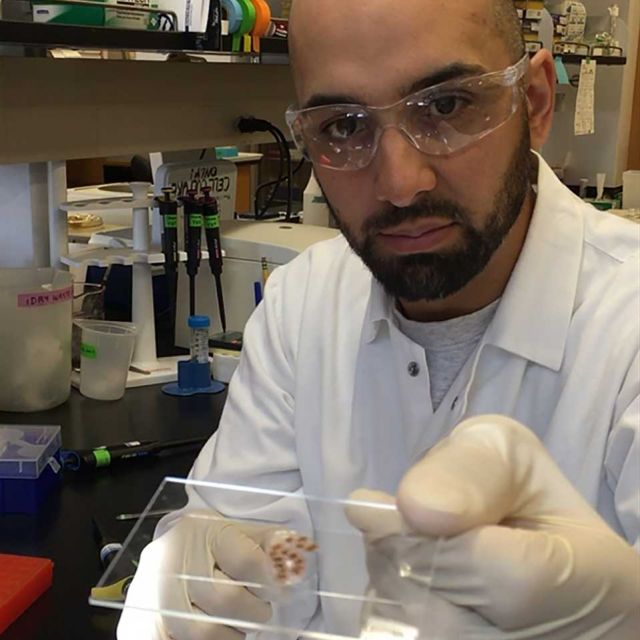
Shane Nourizadeh
Research
My research is focused on stem cell activation during whole-body regeneration (WBR) in two colonial tunicates: Botryllus schlosseri and Botrylloides diegensis. These invertebrate species are small ocean-dwelling organisms found near almost every continent in open shore habitats permanently adhered to docks, mussel shells, and other surfaces. Colonies are composed of individuals, termed zooids, that include a complex body plan including a stomach, intestines, heart, germline, and nervous system. All zooids tightly associate to form star-shaped clusters known as systems. All systems are enclosed within a partially translucent tunic, and multiple systems sharing a common tunic are collectively referred to as a colony. All zooids in a colony are connected via a common vascular system that runs throughout the tunic and outside of the zooids. This vascular setup is dynamic and in conjunction with other tissues is largely involved in WBR. To induce WBR, we excise all zooids and developing bodies from a colony. This triggers the development of a zooid from the vasculature and blood cells within. Directly after surgical removal of the bodies, blood vessels undergo extensive rearrangement, and a niche for tissue regeneration is formed within days. The field is still attempting to elucidate the source tissue that initiates this process, what dictates where the niche forms, and the molecular mechanisms that allow cells to replenish lost tissue. Because this budding occurs from the vasculature, it has been postulated that circulating blood borne cells are involved.
To characterize vascular rearrangement during WBR, we recorded time-lapse videos of the hours directly following surgery. The purpose was to split early rearrangement into stages to allow predictions regarding when and where a regeneration niche would occur. We noticed if developing secondary bud fragments are left, they would migrate to the vasculature which allowed us to predict where a zooid would form. This was a critical observation that has eluded researchers in the past because the bud migrated out of its original position and was hidden near the vasculature in under 12 hours post-surgery. We determined that the secondary bud is not a niche for regeneration, but develops ectopically. This indicates that the source tissue for what was previously thought to be WBR, is a secondary bud that mobilizes through the tunic to continue development. This adjusted our focus onto Botrylloides diegensis, which facilitated the finding by Dr. Kassmer that blood borne integrin-alpha 6+ cells can rescue regeneration and are therefore necessary. Future studies will research whether these cells are a heterogenous population of stem cells, and what signaling mechanisms are induced upon injury and required for non-embryonoic development. Our findings on Botryllus schlosseri also have implications on the origin of WBR, which sheds new light on when this process emerged evolutionarily.
Chordates rarely possess the ability to regenerate an entire body from minimal tissue and studying this mechanism in colonial tunicates will help our understanding of spatial and temporal aspects of receptors, ligands, morphogens, and growth factors responsible for tissue reorganization and regeneration. Recent genome sequencing has shown tunicates to have homologs for over 600 human genes related to a multitude of processes including cancer and immunity, so there exists the possibility to uncover genes related to human cell pluripotency and regeneration in future findings.